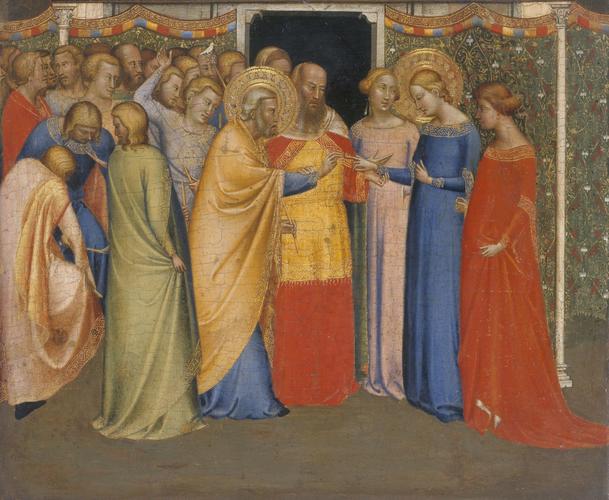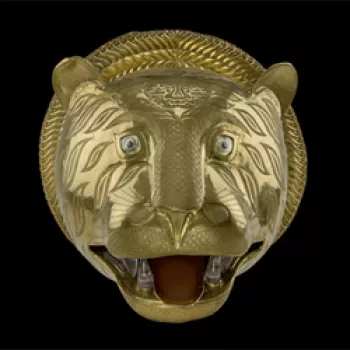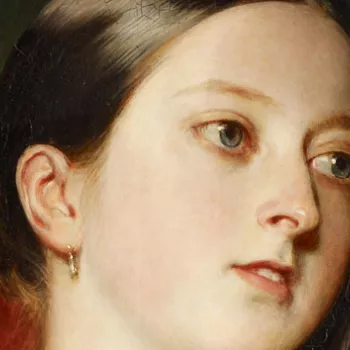The Marriage of the Virgin c. 1339-42
Tempera on panel | 25.5 x 30.7 cm (support, canvas/panel/stretcher external) | RCIN 406768
-
This panel by the Florentine artist Bernardo Daddi was originally commissioned for the high altar of Florence Cathedral but was later moved to the church of San Pancrazio in Florence where it was recorded by Vasari. The panel formed part of the predella (the lowest row of panels) of the high altarpiece. The predella forms the most complete surviving full-scale work substantially painted by the artist. The multi-tiered altarpiece had been dismembered before the end of the eighteenth century, but nearly all the surviving panels are today on display in the Uffizi, Florence. The 'Virgin and Child Enthroned' in the centre is flanked by standing saints to left and right. Above are half-length apostles with angels and prophets. The predella of eight panels illustrated the early life of the Virgin. The 'Marriage of the Virgin' was the sixth in the sequence. It was evidently cut down after it was separated from the altarpiece and the small areas of its upper corners were repainted. (Each of the predella panels still in the Uffizi measures 50 x 38 cm, including an arched top.) This is, however, the best preserved of the surviving predella panels. The source for the scene can be traced to the apocryphal gospel 'The Protoevangelium' of James (AD 8-9) and 'The Golden Legend' by Jacobus Voragine (c.1229-98), in which the Virgin's suitors were instructed to bring rods to the Temple altar. The rod belonging to Joseph flowered. When the Holy Spirit (in the form of a dove) perched on the tip of Joseph's rod, it was clear that Joseph had been chosen to be the Virgin's spouse. Here the bare-headed High Priest joins the hands of Joseph and Mary while disappointed suitors break their rods. The dignified weight of the figures shows the influence of Giotto, with whom Daddi probably trained, but the severity of Giotto's style has been reduced by other influences. The intense bright colours, delicate modelling and decorative details derive from the work of Sienese artists such as Ambrogio and Pietro Lorenzetti. Daddi belonged to the group of artists who introduced 'the miniaturist tendency' into Florentine art, a lyrical style which continued to the end of the fourteenth century.
Provenance
Painted for the high altar of Florence Cathedral and later moved to the church of San Pancrazio in Florence; Uffizi by 1808; Accademia, 1810; given in exchange to the dealer Luigi Marzocchi, 1817; Johann Baptist Metzger; from whose son, Ludwig, bought, through Ludwig Gruner; given to Prince Albert by Queen Victoria on his birthday, 26th August 1846; recorded in the Prince's Writing Room at Osborne House in 1876 (no 132)
-
Creator(s)
Acquirer(s)
-
Medium and techniques
Tempera on panel
Measurements
25.5 x 30.7 cm (support, canvas/panel/stretcher external)
25.5 x 30.7 x 4.2 cm (panel)
30.0 x 34.8 x 4.8 cm (frame, external)
Category
Object type(s)
Other number(s)
Alternative title(s)
Lo Sposalizio di Maria Vergine











